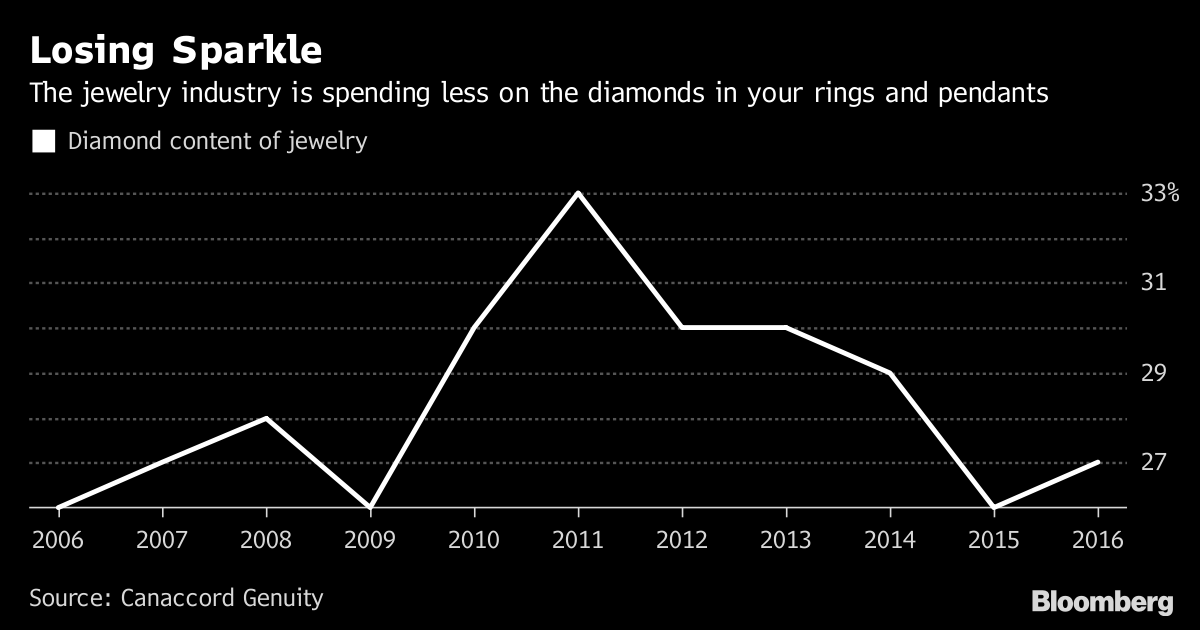The diamond industry has a size problem.
Instead of splashing out on a ring or necklace featuring one big, bright diamond, shoppers are increasingly choosing pieces with several, smaller gems, which are often lower quality. And selling jewelry with smaller stones has been a good way for retailers to save money.
As a result, the diamond content in jewelry has been shrinking since 2011 back to a level last seen almost a decade ago, creating a headache for miners. It’s part of the reason the jewelry industry has been struggling to grow. The amount spent on diamond jewelry items has stayed at about $80 billion a year since 2014, according to De Beers.
“Falling diamond content looks likely to continue,” said Anish Aggarwal, a partner at industry consultant Gemdax. “It’s possible that even if diamond jewelry demand increases, the underlining diamond demand does not.”
Less money is being spent on diamonds partly because jewelers are cutting back amid higher overheads and other costs, Aggarwal said. Also, Asian consumers are increasingly accepting lower quality stones.

The anemic growth has forced gem producers to respond. Top miner De Beers raised its 2017 marketing budget to $140 million, the highest in almost a decade. The campaign reversed spending cutbacks that followed the collapse of De Beers’s monopoly in the early 2000s, leaving the industry splintered and unwilling to pay for promotion that could aid rival miners.
The sector also launched the Diamond Producers Association lobby in 2015. The group, which raised its budget almost 10-fold last year, was set up to revive the glory days of 50 years ago, when slogans like "a diamond is forever" were ubiquitous in popular culture.
Gem prices have been pressured in recent years following an industrywide credit crunch and as younger consumers drifted toward other luxury items such as electronics. While an index of rough-diamond prices has increased in the last few months, it’s still more than 40 percent below a peak set in 2011.
Consultant Bain & Co. warned in December that demand could stagnate for another decade unless the industry increases spending to lure consumers. Aggarwal agrees that more advertising is needed.








